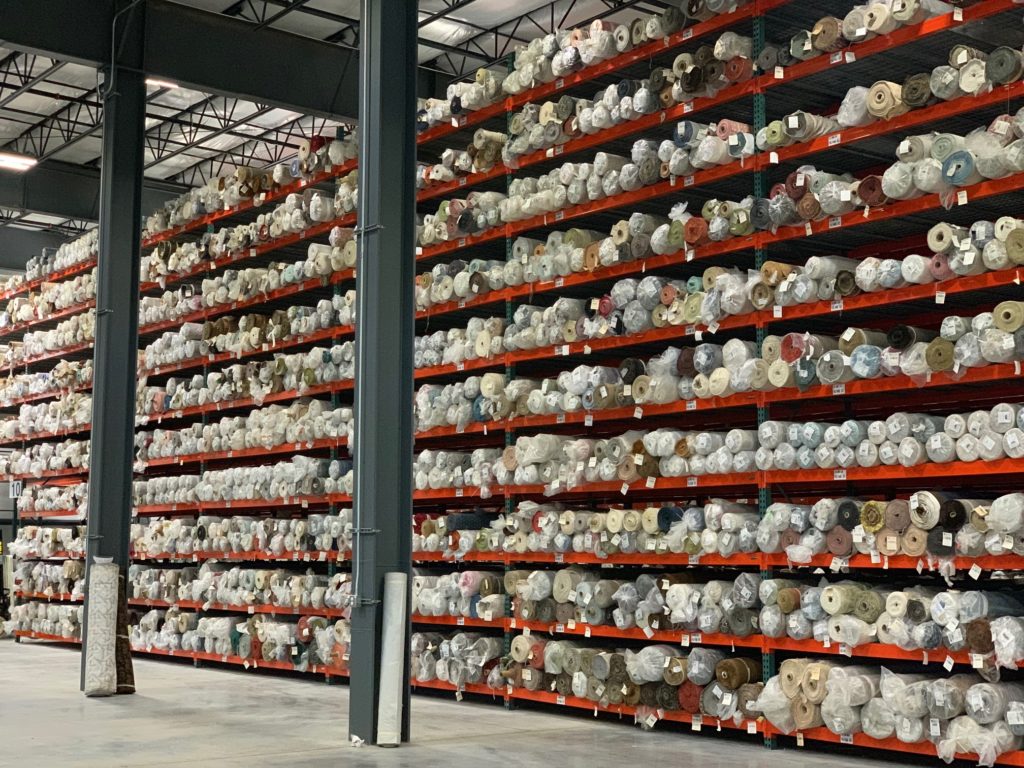Have you ever wandered the aisles of a fabric store, overwhelmed by the endless bolts of beautiful textiles, and wondered how they went from a concept in a designer’s mind to full-fledged fabrics, available to purchase? That’s the behind-the-scenes work of textile converters! The textile industry is a vast and complex sector that plays a crucial role in the global economy and within this industry, textile converters bridge the gap between manufacturers and retailers.
Think of textile converters as matchmakers, bringing together the raw potential of fabrics with the needs of designers and decorators. We source textiles in bulk, often directly from mills, and then transform them into something businesses like fabric distributors, furniture makers, jobbers, and more can purchase. Regal plays an intermediary role in the textile market, but our capabilities widely range from converting artwork and original designs into textiles, mill capabilities into unique textures, and curating collections and colorlines that will resonate with the greater market downstream.
Here are a few roles textile converters play in the fabric industry:
- The Curators: Our in-house design and merchandising team has a keen eye for trends and what’s hot in home decor. We source a wide variety of fabrics from trusted mill partners worldwide, from luxurious velvets to breezy linens, ensuring there’s something for every style and application our customers need.
- The Transformers: Raw fabric, called “loom state” or “greige goods,” isn’t exactly ready for end customers. A converter like Regal gets the fabric dyed, printed with stunning patterns, or finished with special treatments like flame retardancy and PFAS-free performance stain & water repellency.
- The Connectors: We act as a bridge between the mills that produce the fabric and the fabric retailers, jobbers, and furniture makers. We ensure proper supply to meet demand (and most importantly, ensure that our entire supply chain follows Regal’s Responsible Supply Chain Policy) at a competitive, fair price.
Why are textile converters important?
Textile converters are the middlemen who keep the home decor world spinning. Here’s why:
- We save you money & time: By purchasing in bulk, we can offer lower prices to retailers and customers, making it cost-effective for businesses to source high-quality textiles they may not otherwise be able to access. And by bringing in full production lots and stocking around 2 million yards of fabric, we provide the convenience of globally-sourced fabrics all shipped from our warehouse in Massachusetts. We can also ship directly from international weaving mills to customers’ manufacturing facilities overseas when needed.
- We guarantee quality: We only work with reputable mills personally vetted by Regal’s president and director of product. Additionally, our eagle-eyed in-house inspectors perform quality checks on every new fabric, ensuring our customers get a durable, beautiful product.
- We offer access to global markets: We have exclusive relationships with international networks and partners across the world, giving local retailers access to global textile markets.
- We mitigate risk: We help manage risks for both manufacturers and retailers by balancing supply and demand, and by offering products from multiple sources.
- We offer variety: We provide a wide range of products, allowing retailers to choose from a wealth of various styles, fabrics, and designs.

Regal Fabrics Stocks 60,000 rolls of fabric on-site in the USA
So, the next time you admire a gorgeous throw pillow or a perfectly upholstered chair, think about textile converters working behind the scenes to bring beautiful fabric to market!
Any other questions about how textile converters work? We’re happy to answer!
You may also like these blog posts:
